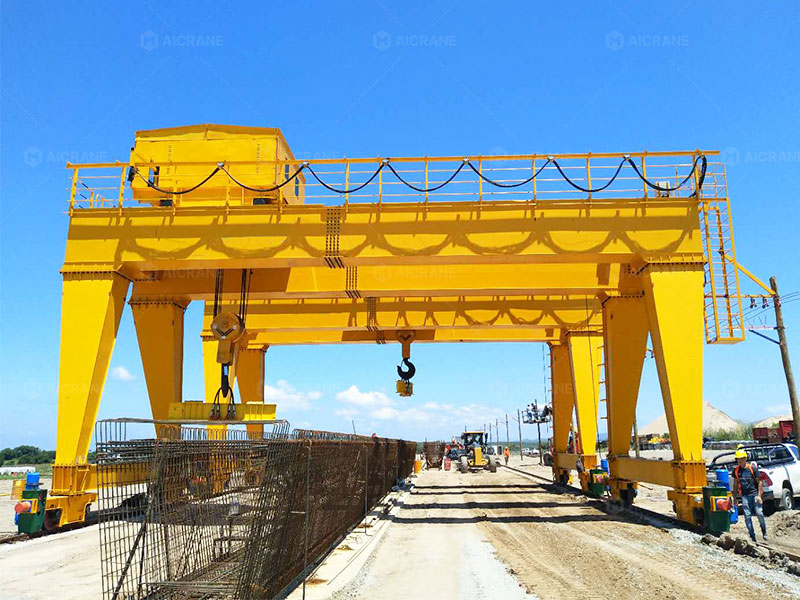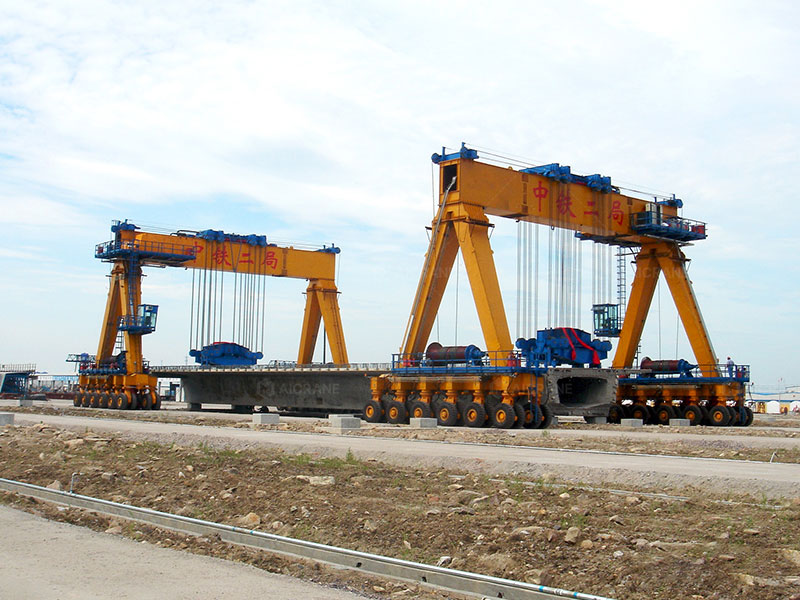Precast concrete production yards demand heavy lifting solutions that are not only robust and efficient but also tailored to the specific needs of handling bulky, heavy, and often delicate concrete components. Gantry cranes have become the go-to solution in these environments, providing flexibility, mobility, and lifting capacity unmatched by other equipment. However, when designing or selecting a gantry crane for a precast yard, special considerations must be addressed to ensure safe operation, long service life, and optimal performance. This article outlines the key factors to consider for precast concrete yard gantry cranes, from structural design to environmental adaptation, and highlights the importance of customization for these heavy-duty applications.

1. Load Capacity and Lifting Requirements
The foremost consideration in any precast yard gantry crane for sale is the lifting capacity. Precast concrete elements vary significantly in size and weight, ranging from small beams to massive bridge segments or wall panels. It is crucial to:
-
Determine the maximum load weight the crane needs to handle, including the weight of lifting devices like spreader beams or clamps.
-
Account for simultaneous lifting of multiple components or tandem lifting with a second crane if needed.
-
Include a safety factor, typically 1.1 to 1.25 times the maximum expected load, to ensure structural safety and avoid overloading.
Double girder gantry cranes are often preferred in precast yards for their high load capacities and stability, with common configurations ranging from 20 to over 100 tons.
2. Crane Span and Yard Layout
The layout of the precast yard directly affects the crane’s span and rail system:
-
Span length must accommodate the width of the storage and production zones. A larger span provides more coverage but requires a stronger, often more costly structure.
-
Rail-mounted systems are ideal for long production yards where concrete elements are laid out linearly.
-
For greater flexibility, rubber tyre gantry cranes (RTGs) may be used, especially where frequent repositioning is necessary.
A well-planned crane span and track layout reduce material handling time and improve production efficiency.
3. Lifting Height and Clearance
Precast yards often require cranes with significant lifting height due to the stacking of concrete elements or the height of molds:
-
Determine the maximum stacking height and add clearance for the lifting device.
-
Account for clearance above molds, storage racks, and truck beds if the crane is also used for loading vehicles.
-
Ensure sufficient underhook height to avoid collisions and allow for safe maneuvering of large components.
4. Custom Lifting Devices and Spreader Beams
Because precast elements come in various shapes and sizes, a one-size-fits-all lifting hook is rarely sufficient:
-
Spreader beams, clamps, magnets, or vacuum lifters may be required, depending on the type of precast product.
-
Custom devices must be designed to distribute load evenly to prevent cracking or damaging the concrete.
-
Quick-release or modular lifting attachments can improve productivity by allowing the crane to handle multiple product types efficiently.
Investing in the right lifting tools significantly improves safety and operational efficiency.

5. Environmental and Weather Considerations
Precast yards are often exposed to outdoor conditions, making weather resistance a critical design aspect:
-
Gantry cranes must be designed for wind load resistance, especially in typhoon or storm-prone areas.
-
Rainproof and rust-resistant materials, such as galvanized or painted steel, protect the outdoor gantry crane from corrosion.
-
Enclosed cabs or operator shelters may be necessary for comfortable and safe crane operation during inclement weather.
-
For cold regions, heated components and anti-freezing measures should be considered to ensure smooth operations in winter.
Wind speed monitoring systems and rail clamps are also recommended to stabilize cranes during high winds or idle periods.
6. Automation and Control Systems
Precast concrete yards increasingly adopt automation to reduce labor costs and enhance safety:
-
Remote controls and cabin controls are commonly used, with remote operation providing better visibility and safety.
-
Programmable logic controllers (PLCs) allow for semi-automatic lifting and positioning.
-
Integration with yard management software helps schedule lifts and track inventory, improving overall workflow.
-
Advanced systems may include anti-sway mechanisms, load monitoring systems, and collision avoidance features.
Automation not only improves accuracy and consistency but also enhances operator safety by reducing manual handling.
7. Durability and Maintenance Access
Given the demanding working environment, durability is essential:
-
Use high-strength steel structures with reinforced joints and welds for long-term reliability.
-
Crane components like wheels, motors, and gearboxes should be easily accessible for maintenance.
-
Lubrication points, inspection platforms, and fall protection systems should be integrated into the design.
-
Regular maintenance and inspection protocols must be established to prevent breakdowns and downtime.
Selecting cranes from reputable manufacturers with proven track records in precast applications also ensures better durability and parts availability.
8. Safety Features and Standards Compliance
Precast yards are high-risk environments, and crane safety must be a top priority:
-
Overload limiters, emergency stop systems, and travel limit switches are essential.
-
The crane should comply with relevant standards such as ISO, FEM, or local industrial safety regulations.
-
Operator training and certification should be part of the crane deployment process to minimize human error.
-
Guardrails, access ladders, and walkways should be included for safe maintenance.
Additionally, real-time load indicators and alarms can provide feedback to the operator, improving safe crane operation.
9. Crane Mobility and Flexibility
Depending on the size and type of the precast operation, mobility may be a key consideration:
-
Rail-mounted gantry cranes (RMG cranes) are fixed along the yard and ideal for predictable workflows.
-
Rubber tyred gantry cranes (RTG cranes) offer the advantage of mobility without rail installation and can be moved across multiple bays or locations.
-
Some precast yards may require tandem gantry crane systems for lifting ultra-large elements or working on long beams.
Evaluating current and future yard layout and production needs helps in choosing between fixed and mobile gantry systems.
10. Customization Based on Precast Products
Finally, no two precast yards are identical. Cranes must be tailored based on:
-
Product dimensions and production volume
-
Space constraints
-
Loading and dispatch methods
-
Type of lifting operations: vertical only vs. combined with travel and rotation
Working with an experienced gantry crane manufacturer allows for the development of fully customized solutions that align with your yard’s production strategy.
Conclusion
Precast concrete yard gantry cranes are vital to modern construction supply chains, offering unparalleled lifting power, reach, and efficiency. However, selecting or designing the right gantry crane system for a precast environment involves far more than just choosing a tonnage and span. Load characteristics, yard layout, environmental conditions, lifting devices, safety systems, and automation all play essential roles. By understanding these special considerations and working with qualified crane experts, precast manufacturers can ensure that their gantry crane investment delivers long-term performance, safety, and productivity. Whether you are upgrading an existing yard or designing a new precast facility, these insights will help guide your decision-making toward optimal outcomes.